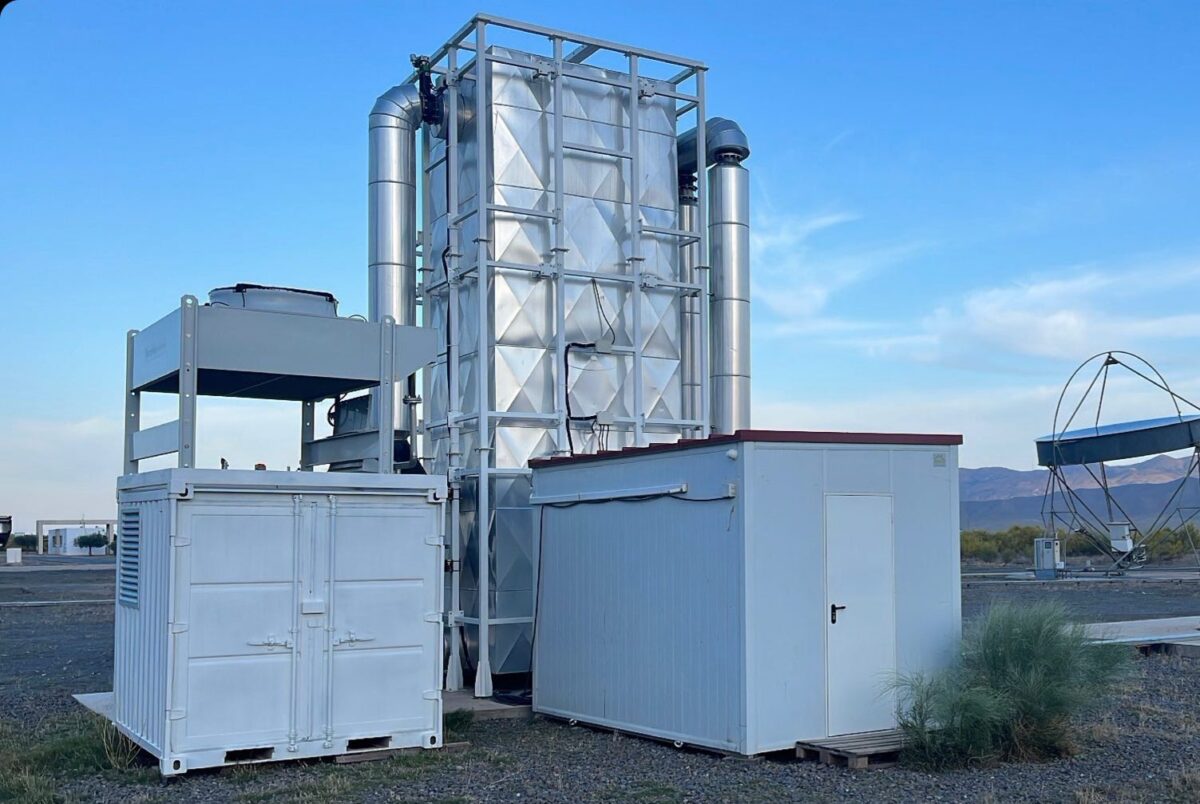Although TES has largely failed to scale to date, solutions have emerged to deliver on the technology's promise to decarbonize heat and power.
Now, Serbia-based Storenergy has developed a modular, packed-bed TES solution that uses recycled ceramic as a storage medium. The material is sourced from Masdar City-based Seramic Materials, which obtains recycled ceramic from industrial solid waste, such as steel slag, and can store temperatures up to 1,250 C.
“We opted for this material as it involves no complicated parts, toxic chemicals or materials,” Marko Vuksanovic, CEO of Storenergy, told pv magazine.
In Storenergy's system, the ceramic is heated up to 900 C, after which heat is transferred by air to the heat exchanger and then steam is generated in a classical steam turbine cycle.
“The electric air heater, storage design, and steam generator are the novel parts and everything else is standard equipment, including steam turbine, condenser and the power station,“ said Vuksanovic.
The company has already obtained patents for its technology in the United States, Australia, and South Africa, while the European documents are in the works.
“We decided to develop our thermal storage solution because of its efficiency and the price we can achieve with it,” said the CEO.
The solution’s capex stands at €12 ($13.49)/kWh. For an installation coupled with a PV plant, the levelized cost of electricity (LCOE) is calculated between €42/MWh to €50/MWh for a 1.6 GWh thermal storage system with an electricity output of 10 MW. The levelized cost of heat (LCOH) is calculated at €23/MWh for a thermal storage system with 330 MWh capacity and with 5 MW of heat output.
The system has high energy content per volume of 450-500 kWh of heat per cubic meter. “If you compare this to hydro power plants, the difference is huge. A 100-meter high water column can store only 0.27 kWh/m3. Our system is more compact and has a smaller footprint and can be built close to the source of energy with no locational constraints,” Vuksanovic says.
For heat, Storenergy envisages efficiencies of around 90%, while for co-generation, the figure stands at 60%. For power generation alone, the company expects an efficiency of around 30- 40%.
The system is said to be low maintenance, with a lifespan of 35 years. It is designed to store energy for up to a month. “It does not make sense to use it for longer time periods, as the losses are around 1% a day,” Vuksanovic says. According to him, optimally, the storage duration should be 10 days resulting in 5-10% heat loss.
The company’s test project is a 3 MWh TES system deployed at the CIEMAT institute in Spain. It is coupled with a small Organic Rankine Cycle containerized turbine, and has a footprint of 2m X 2m, and it’s 7 meters high.
“Now, we are on the lookout for investors who could help us deploy larger-sized systems,” Vuksanovic said. “We are working on a couple of more projects in Serbia and one more abroad. We are also seeing a great interest in our technology coming from India and the Middle East.”
Given the bulkiness of the system and shipment costs, the company’s strategy is to produce close to the project location and in cooperation with local partners in places of projects realization for most of the civil and fabrication works.
“We would like to relocate our business to the US, and negotiations are already ongoing. It’s because it’s the biggest market and always ready for new ideas,” said Vuksanovic.
This content is protected by copyright and may not be reused. If you want to cooperate with us and would like to reuse some of our content, please contact: editors@pv-magazine.com.




3 comments
By submitting this form you agree to pv magazine using your data for the purposes of publishing your comment.
Your personal data will only be disclosed or otherwise transmitted to third parties for the purposes of spam filtering or if this is necessary for technical maintenance of the website. Any other transfer to third parties will not take place unless this is justified on the basis of applicable data protection regulations or if pv magazine is legally obliged to do so.
You may revoke this consent at any time with effect for the future, in which case your personal data will be deleted immediately. Otherwise, your data will be deleted if pv magazine has processed your request or the purpose of data storage is fulfilled.
Further information on data privacy can be found in our Data Protection Policy.